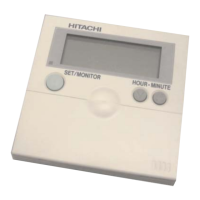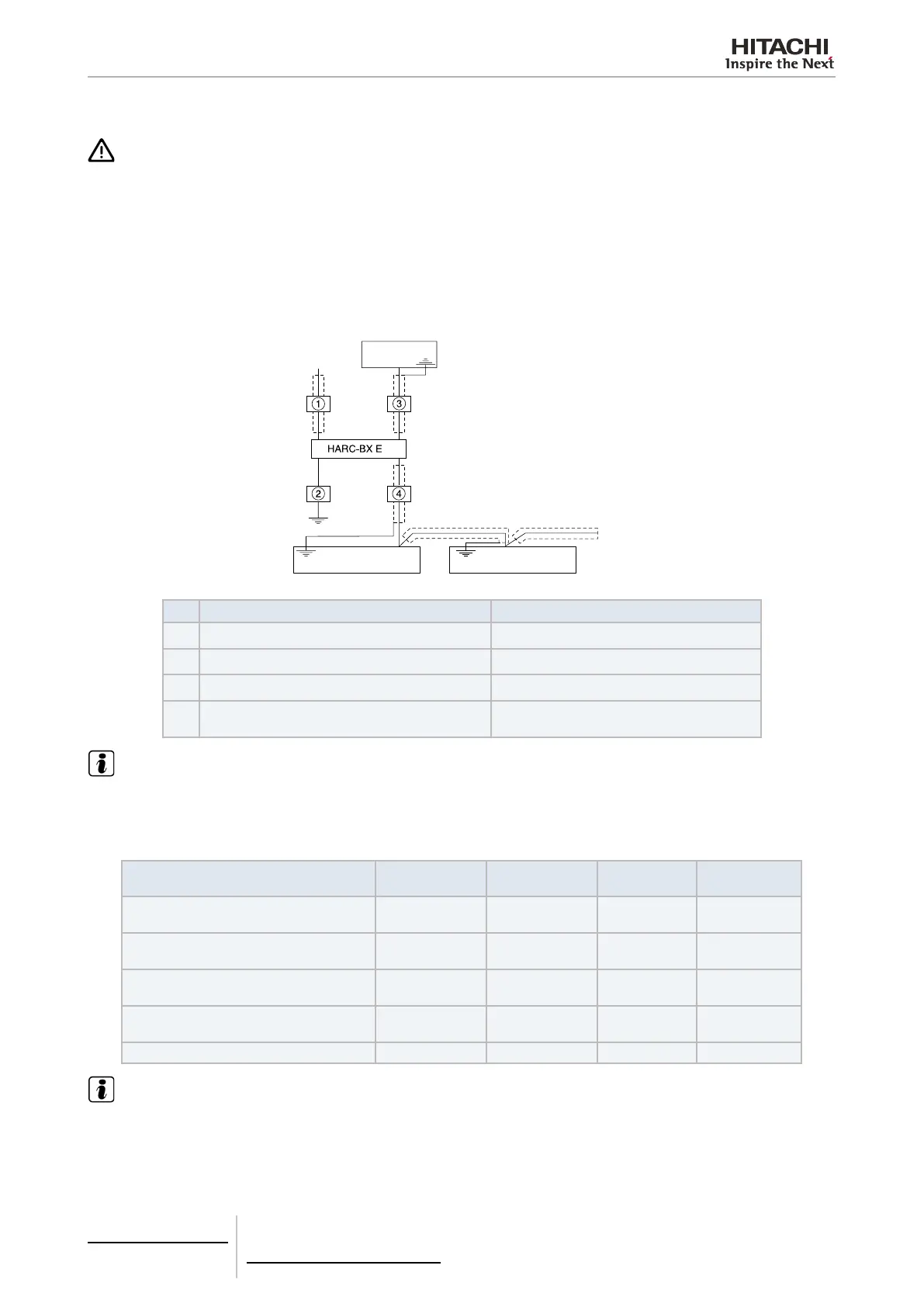7 Gateways for building management systems
HARC-BX E
TCGB0106 rev.0 - 12/2014
672672
7.4.3 Electrical wiring
CAUTION
• All wiring work must be done in accordance with local regulations and the instructions of the electricity company.
• A qualied electrician should carry out the electrical wiring.
• Adjust the electrical leakage detector switch in accordance with local regulations.
7.4.3.1 Type of wiring
1 The wiring for the HARC-BX E depends on the components connected. The HARC-BX E should be installed between
the power supply, the monitoring equipment, the mono bloc air conditioning and the earthing connection.
2 Wiring method
AC 100/240V
Power supply
Control device
Monobloc air
conditioning
Monobloc air
conditioning
No. Connection equipment Wiring specications
Power supply wiring AC 100/240V 2 mm
2
shielded with 2 cores
Earthing cable According to local regulations
Monitoring equipment wiring LonWork* network cable
Signal cable between units
1P-0.75 mm
2
shielded pair or twisted and
shielded pair cable
NOTE
* LonWork network cable: Use the cable recommended by Echelon Co., Ltd. and follow the monitoring equipment manufacturer’s instruc-
tions. For further information, consult the manual supplied by Echelon Co., Ltd. “FTT·10A transceiver user guide”.
By way of a reference for the user, the following table describes the types of signal cables and their characteristics.
Cable
Cable diameter/
AWG
Electrical
resistance Ω/Km
Capacitance
µF/Km
% Vprop of the
speed of light
Belden 85102, one/twisted pair, number of
cores 19/29, without shielding, 150 ºC
1.3 mm/16 28 56 62
Belden 8471, one/twisted pair, number of
cores 19/29, without shielding, 60 ºC
1.3 mm/16 28 72 55
Level VI 22AWG, twisted pair, one core,
without shielding
0.65 mm/22 106 49 67
JY(St)Y2×2×0.8, one core, shielded, spiral
4 cable twisted
0.8 mm/20.4 73 98 41
TIA568A Category 5, 24AWQ, twisted pair 0.51 mm/24 168 46 58
NOTE
If a shielded cable is used, it should be connected via a metal lm resistor, with a rating of 470 kΩ 1/4 W, and a tolerance of less than 10%
to prevent the generation of static charges.

